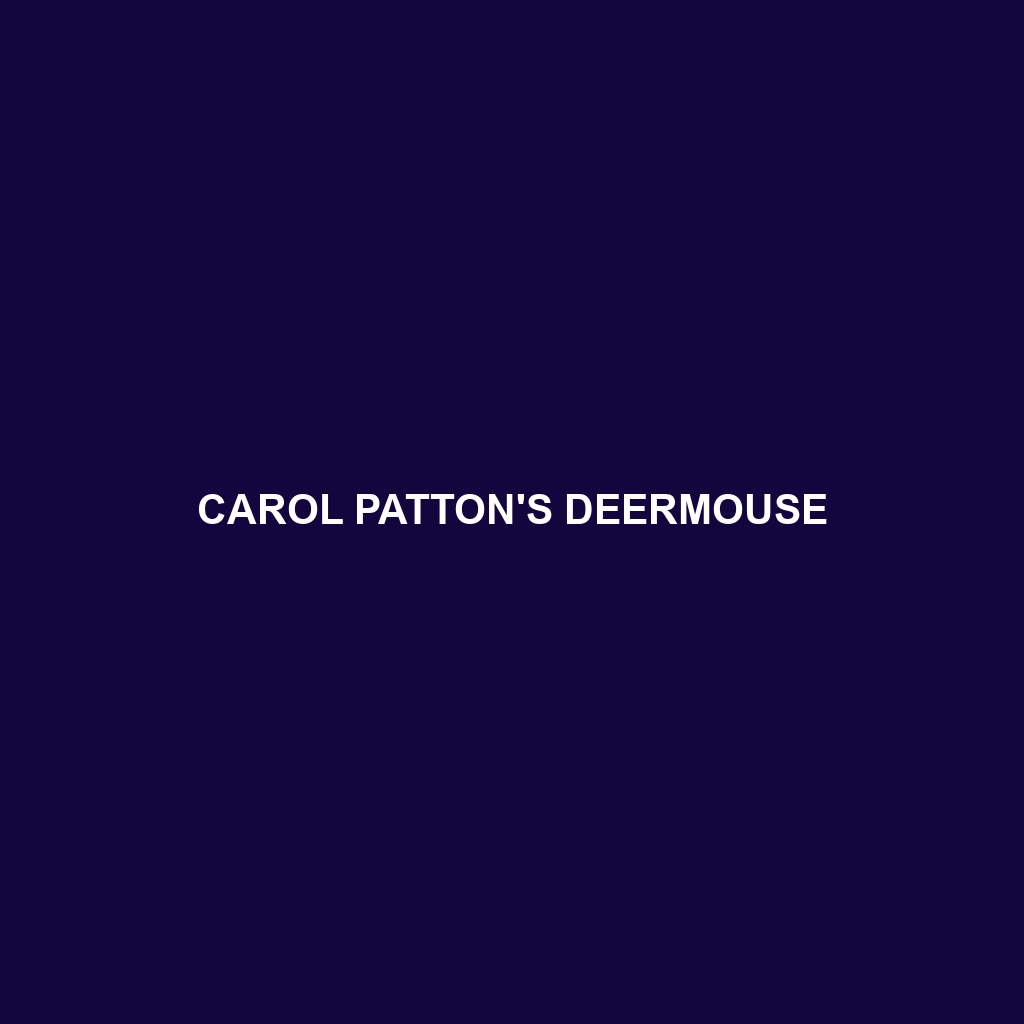Species Description: Carol Patton’s Deermouse
Common Name: Carol Patton’s Deermouse
Scientific Name: Peromyscus pattoni
Habitat
Carol Patton’s Deermouse is primarily found in the southwestern United States and parts of Mexico. These small rodents inhabit a variety of environments ranging from dense woodlands to open grasslands, often favoring areas near streams or rivers. They thrive in regions with abundant ground cover, such as grasses, shrubs, and leaf litter, which provide essential shelter and foraging opportunities.
Physical Characteristics
This species typically measures around 12 to 20 centimeters in length, including the tail. Carol Patton’s Deermouse features a distinctive coloration that includes a soft, brownish-gray fur on the dorsal side and a lighter, white underbelly. One notable feature is its large, dark eyes, which provide excellent night vision, and its long, tufted tail that aids in balance. Additionally, its large ears are key identifiers, allowing for acute hearing.
Behavior
Known for its nocturnal habits, Carol Patton’s Deermouse is most active during the night, engaging in foraging and social interactions. They are adept climbers and often utilize trees and shrubs as foraging platforms. Their social structures can be complex, often forming small colonies that exhibit group living behaviors, enhancing their defense against predators.
Diet
Carol Patton’s Deermouse is an omnivorous forager, primarily feeding on seeds, fruits, and insects. Its diet varies by season, with a preference for high-protein food sources during reproductive periods. They play an essential role in seed dispersal, contributing to the maintenance of their habitat’s plant composition.
Reproduction
The breeding season for Carol Patton’s Deermouse typically spans from spring to early fall. Females can give birth to multiple litters each season, generally comprising 2 to 5 young per litter. After a gestation period of around 30 days, the offspring are born altricial and develop rapidly, becoming independent within a few weeks.
Conservation Status
Currently, Carol Patton’s Deermouse is considered to be of ‘Least Concern’ by the International Union for Conservation of Nature (IUCN). However, habitat loss and environmental changes may pose potential threats, making continued monitoring essential for its long-term sustainability.
Interesting Facts
One fascinating aspect of Carol Patton’s Deermouse is its ability to adapt to various habitats, including urban areas, where it often forages for food scraps. Their presence can indicate a healthy ecosystem, as they contribute to the food web through their interactions with both predators and plants.
Role in Ecosystem
As a small rodent, Carol Patton’s Deermouse plays a vital role in its ecosystem. It serves as a food source for various predators, including owls and snakes, and helps in seed dispersal, which is crucial for plant regeneration. By contributing to soil aeration through their burrowing behavior, they also assist in improving soil quality.
